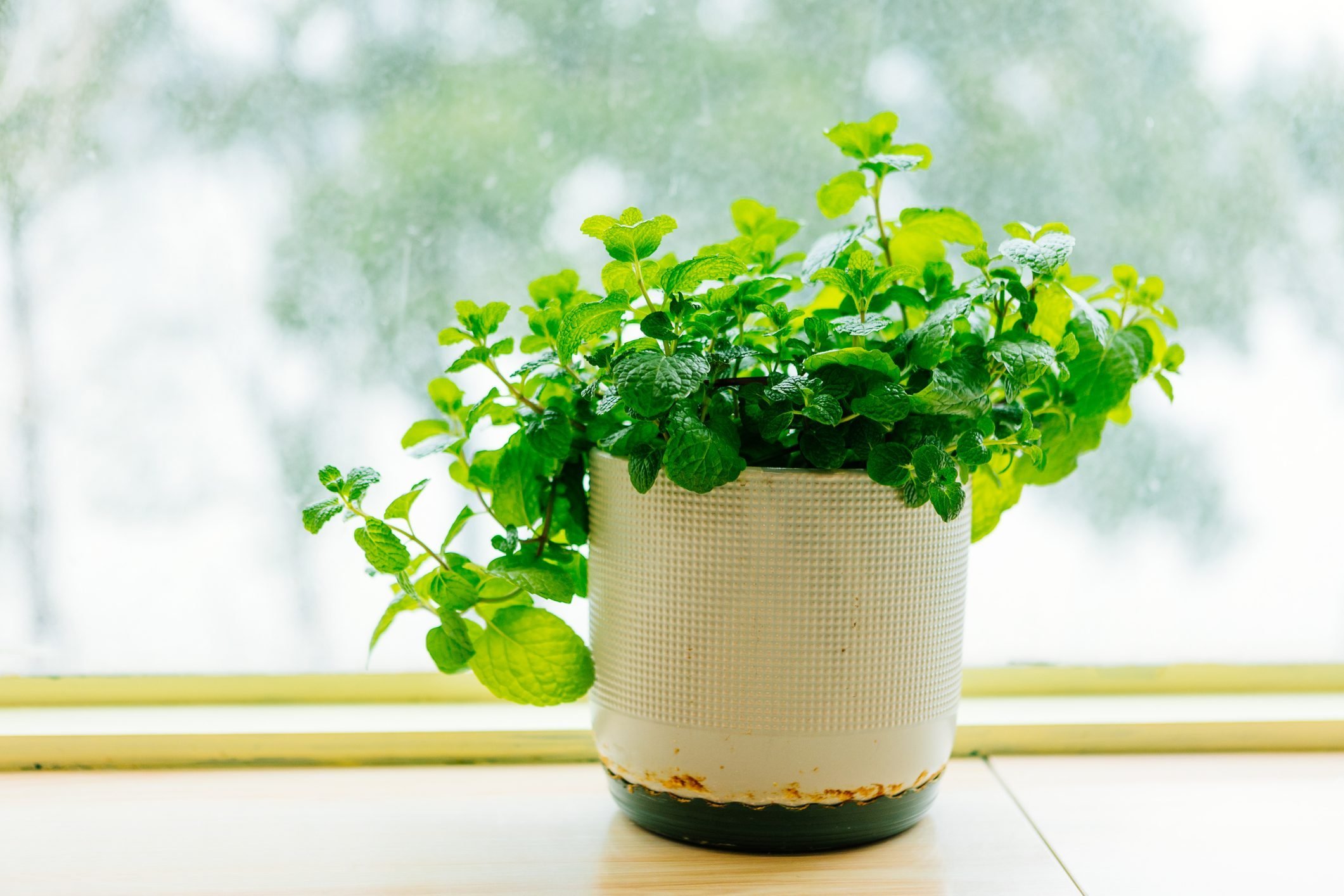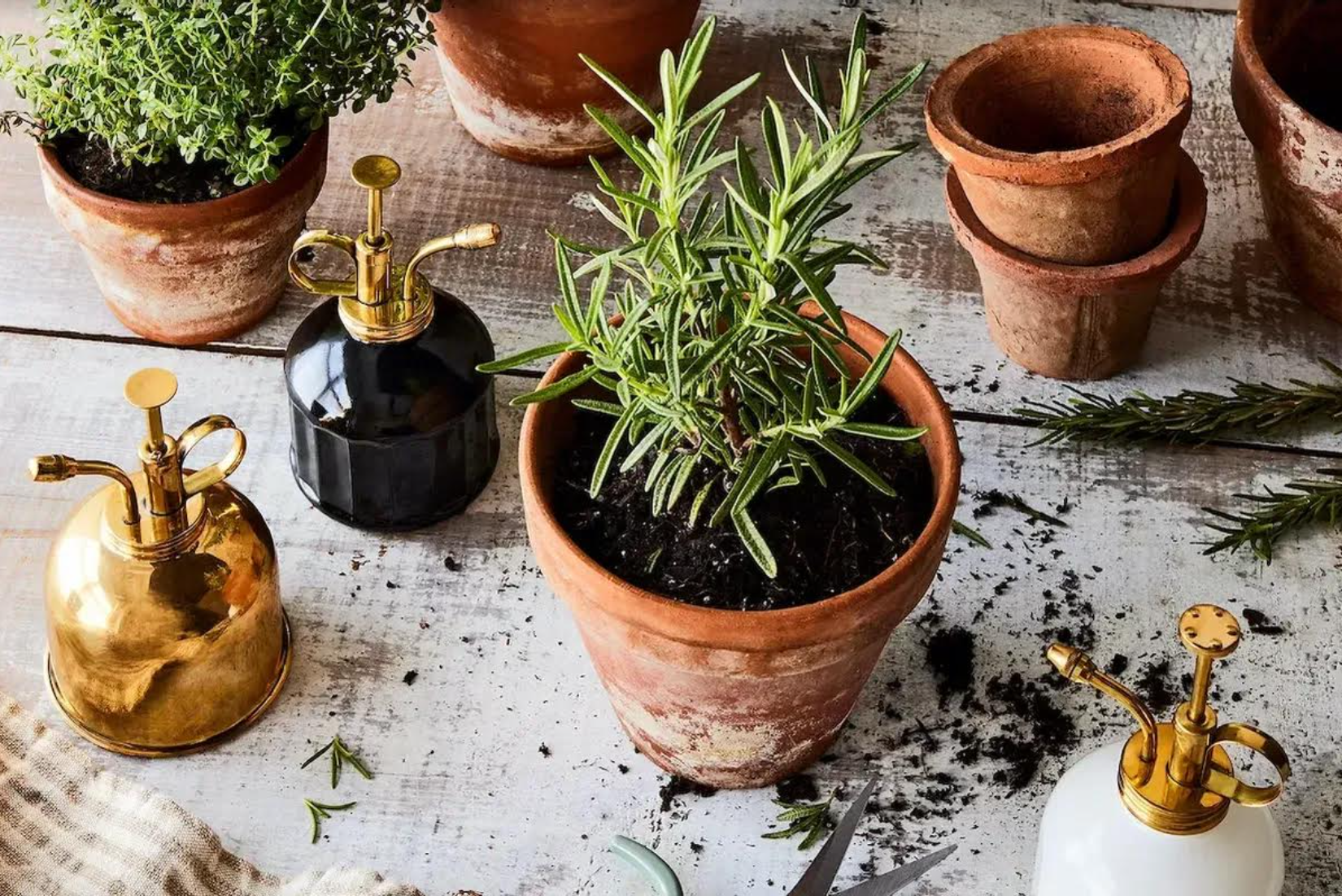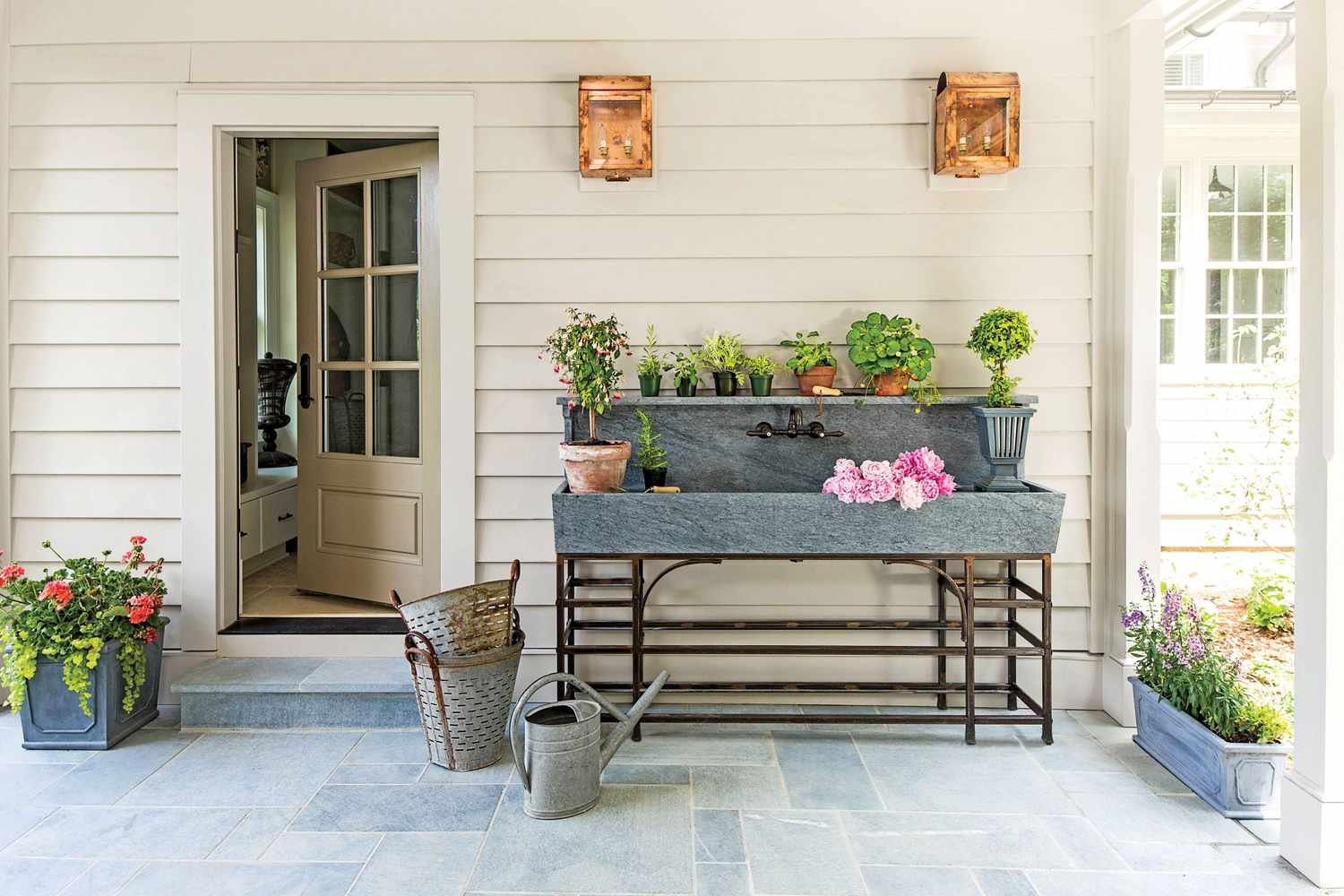Brighten Your Home with Herbal Houseplants
Herbs in the Kitchen
Photo Credit: Architectural Digest
As we settle into the new year, our team at Rooms With Style is looking for new ways to incorporate fresh, outdoor beauty into our homes. Embracing the joy of cultivating fresh herbs indoors year-round is not only rewarding, but also surprisingly simple. Growing herbs indoors has many benefits; they are aromatic, beautiful to look at, and wonderful to use in the kitchen too. All you really need is a sunny window and well-draining pot. We’ve curated a list of four beautiful, no-fuss herbs that you can enjoy in your home throughout the year.
Basil: The Fragrant Essential
Basil is a must-grow, especially if you love Italian food. The most popular is Sweet Basil (also called Italian Basil or Large Leaf Basil) which has big, deep green leaves and a robust flavor. Try adding leaves to marinara sauce, pizza, lasagna and more! Basil is that delicious pop of green in a Caprese salad, and it is also the ingredient that gives pesto its beautiful color.
Growing Tips: Basil thrives in well-drained, consistently moist soil and requires ample sunlight. Place it near a sunny window in your home. Basil likes to stay warm, so in the winter, keep the plant near a bright window but not in the windowsill. This herb can also be re-potted into a larger, deeper pot which allows the roots to spread out and stay consistently moist.
Sweet Italian Basil (middle in black container)
Photo Credit: Getty Images
Mint: Freshness in Every Leaf
Herbs in the mint family are super easy to grow, and they are an absolute must in Mediterranean and Middle-Eastern dishes (think Greek, Persian, and Israeli food…yum!) Mint is fantastic to add to cocktails like a Mojito or Moscow Mule. Add it to your cup with some honey and hot water for a warming tea that will help with digestion.
Growing Tips: Mint is known for its rapid growth, with invasive roots can easily take over and choke out the roots of other plants, so it’s best to keep this plant in its own container. Your mint plant will be happy with consistently moist soil and indirect sunlight.
Mint on a windowsill
Photo Credit: Taste of Home
Thyme: Compact and Flavorful
There are many, beautiful varieties of Thyme that prove just as lovely as décor in your home as they are in your favorite comforting recipe. Thyme is showy and gives French country chic vibes. It looks spectacular in an aged clay pot. With its earthy flavor, thyme enhances a variety of dishes from roasted poultry, to pot pie and quiche.
Growing Tips: Thyme prefers well-draining soil and moderate sunlight. Water it once the top of the soil feels dry. It likes low humidity environments, so avoid spaces like bathrooms or kitchens.
Thyme (left) and Rosemary (right)
Photo credit: Salon.com
Rosemary: Hardy and Fragrant
Rosemary is a beautiful, aromatic plant that adds robust flavor to roasted meats, stews, vegetables and bread. Try infusing olive oil with it for a very special dipping oil. It’s also beautiful adorning holiday cocktails. As a houseplant, its fragrance is uplifting with a lovely evergreen quality.
Growing Tips: Rosemary needs lots of sunlight and watering only after the soil dries out. It can grow relatively large, so repotting it into a larger container is a must. It likes high humidity, so come winter, keep it in your kitchen or bathroom near a bright window (or in a room with a humidifier!).
For best success, purchase your herbs as started plants in small pots. You can transplant them to larger vessels after a while, or leave them as they are in their containers. Try putting your plant (plastic container and all) into a larger more decorative pot. This makes it easy to remove the plant for watering as needed. Mostly year round, you can find herb plants at upscale grocery retailers (locally, think Kowalski’s and Lund & Byerly’s) as well as specialty grocers and coops like Trader Joes and Whole Foods. Come spring and summer, you will have great luck finding more unique varieties (chocolate mint or lemon thyme anyone?!) at garden centers, florists and farmers markets.
We have some tips for watering herbs that will make the process foolproof and fast. Make sure your herbs are in pots that have drainage holes. Once a week or so, set all of your herbs in the sink and water them where the stems meet the soil, taking care not to shower the leaves in water. Fully soak the soil until water begins to run out of the drainage holes underneath. Leave the plants in the sink for about 15 minutes before putting them back.
In the wintertime, especially if you live somewhere with short and grey days, it’s a good idea to find south-facing areas in your home with lots of natural light for your herbs. Once summer comes around, you can move your plants around your house or even outdoors if you like, so your plants can take advantage of the season. Be sure to wait a few weeks after the last frost date before bringing them outdoors.
Potted Herb Plants on the Patio in Summer
Photo Credit: Southern Living
It is important to note that, if you have pets, be sure to keep the following herbs away from them, as they contain compounds that could be toxic to your furry friends: chives, bay laurel, lemongrass, parsley and marjoram.
Cultivating these easy-to-grow herbs indoors year-round not only adds a touch of greenery and natural beauty to your home, but also elevates your culinary creations with fresh, bright flavors that pack a punch. Get started on your indoor herb garden this year and enjoy the satisfaction of having beautiful plants to enliven your space as well as a readily available supply of fragrant, flavorful herbs at your fingertips.
Author: Marla Carlson, RWS Guest Blogger






